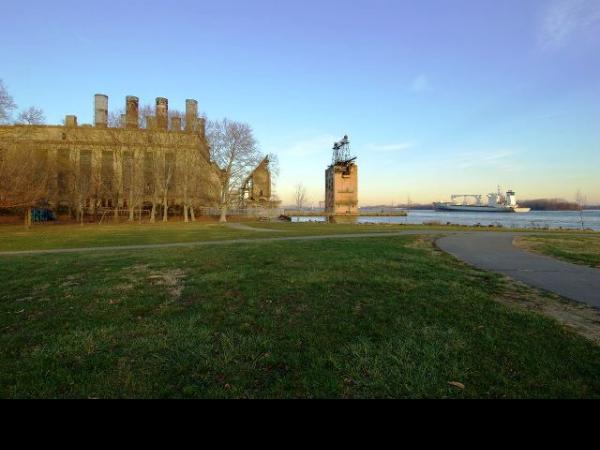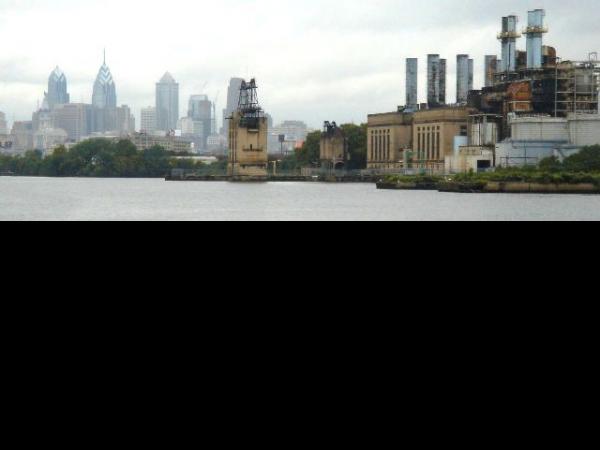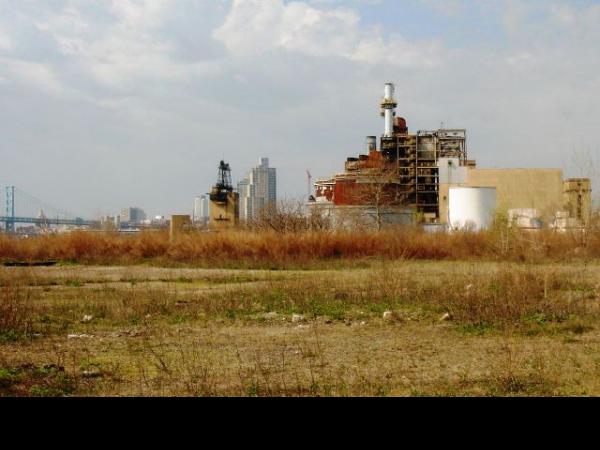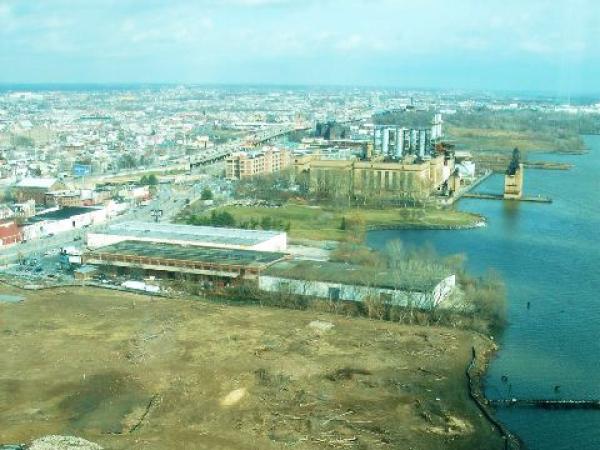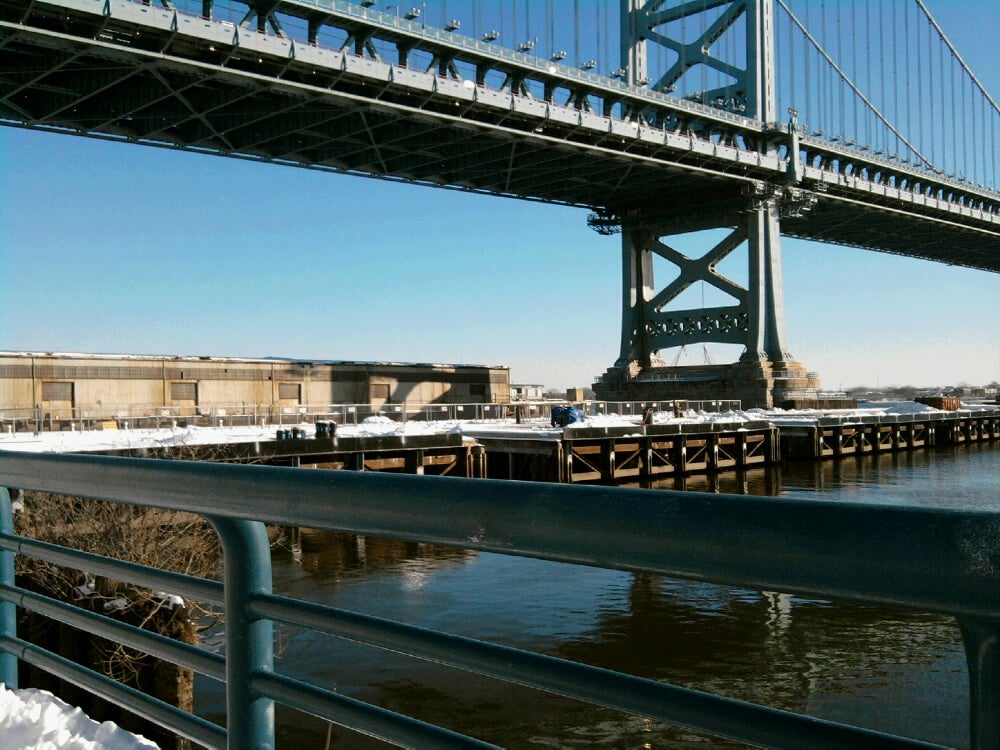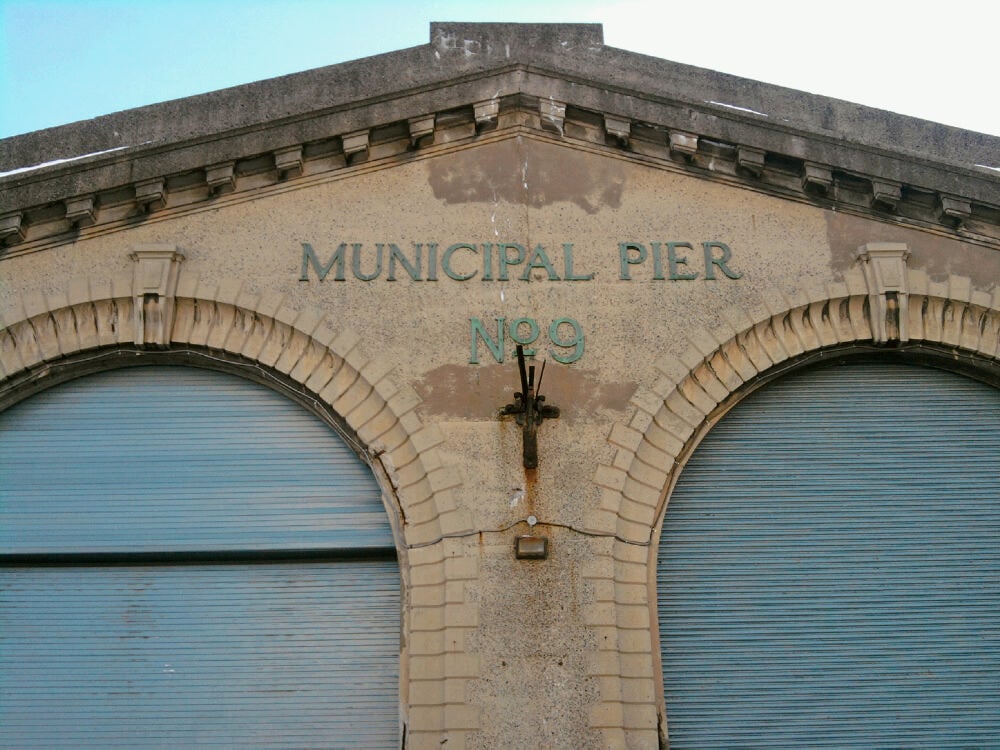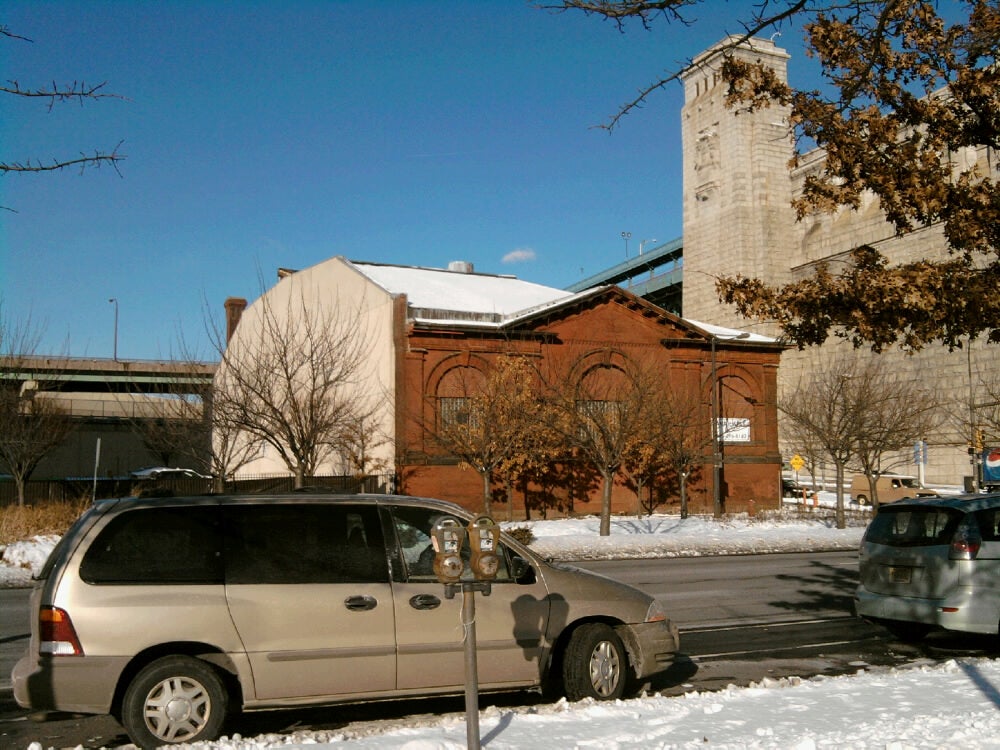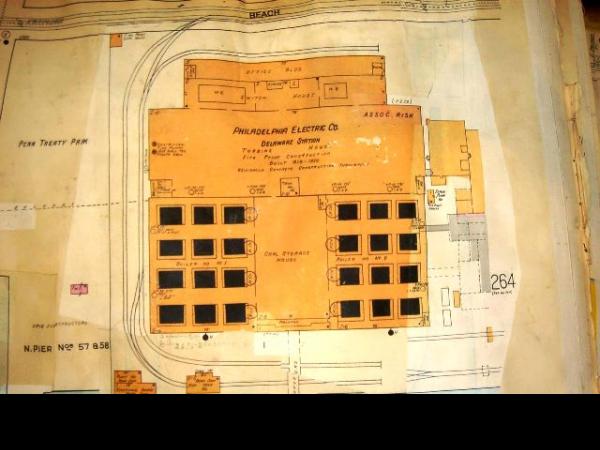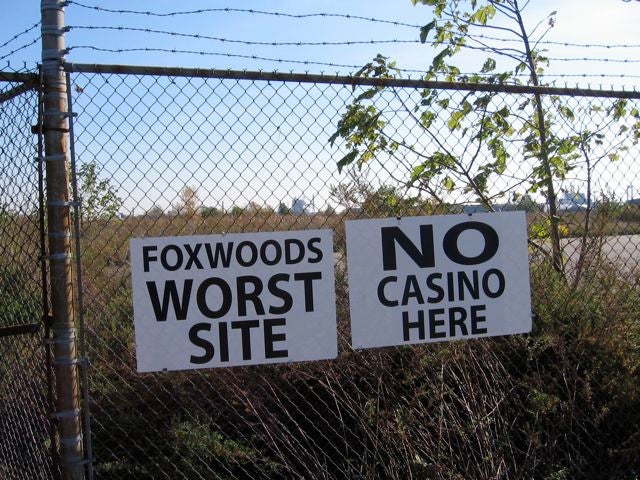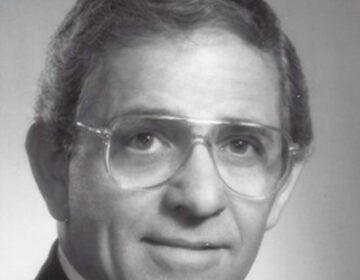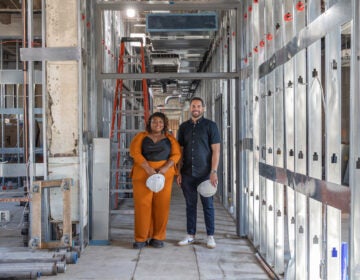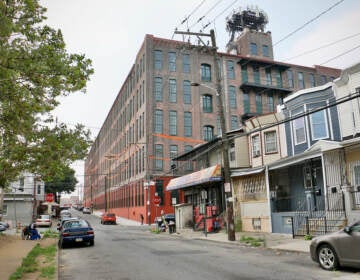DRWC outlines public realm improvement plans
More details about the plans for public space along the Central Delaware Waterfront emerged at Friday morning’s meet up of the Delaware River Waterfront Corporation.
The revocation of Foxwoods Casino’s license opens up new opportunities for mixed use residential development and a large community park at the end of Dickinson Street, reported board member and Penn Design Dean Marilyn Jordan Taylor.
DRWC President Tom Corcoran said he has met with PECO chief executive officer Denis O’Brien to talk about the energy supplier’s plans for the old power station near Penn Treaty Park. “He is going to have his facility people look at PECO’S future needs there,” Corcoran said after the meeting.
Corcoran said it is feasible that PECO would be willing to part with the building. In that case, Taylor said, the master planners imagine an arts venue.
Speaking of the arts, Philly Fringe, which is purchasing the old red brick pumping station across the street from Race Street Pier, is talking to DRWC about holding their annual multi-week festival inside Pier 9 this fall. This would include acts of the Cirque du Soleil variety and the Feastival, DRWC Vice President Joe Forkin said.
Taylor spoke of revamping Delaware Avenue so that there are separate travel lanes for cars, bikes and pedestrians as well as ample greenery. To create a true waterfront promenade, the sidewalk will need to be widened in places, and this may require new setbacks of an additional 10 feet or so when new development takes place.
Taylor, who chairs the planning committee, said that not all of the public realm space will be grassy – some will be hardscape. But the point is, the space will be public and open.
The public realm plan is still being finalized, she said, and will be included with the overall Central Delaware Master Plan, the draft of which will be finished at the end of February.
More on the southern end
Up until recently, Foxwood’s fate was very much uncertain, and master planners devised two options for the future of that large parcel at Delaware and Reed Streets and the adjacent area. The option with a casino in it de-emphasized residential development because planners thought people would not be interested in living so close to a casino. It suggested retail and a hotel as possible uses, and did have a park at Dickinson Street, but a smaller one.
Planners are confident enough now to flesh out the ideas for the site without a casino on it, Taylor said. Dickinson Park could be about six acres. “That’s a really good size for a community park,” she said. In addition, the recently opened Washington Avenue Green would be expanded.
The plan will include a list of items to be developed within the next five years, Corcoran said. This list would contain items to be paid for with a recent $5 million grant from the William Penn Foundation, because it must be spent within two years. A chunk is already committed to the Race Street Pier and Race Street Connector.
But it will take decades to put much of what the master plan recommends in place. Taylor waxed poetic about a day in which the big box stores at the extreme south end would no longer be needed. “I believe by 2035, we will all be shopping very differently,” she said, walking to smaller stores that are close by. The plan will look at the possible “evolution” of the big box sites, Taylor said.
In the middle
The center part of the plan contains a large amount of land that is already public, including Penn’s Landing and the Festival Pier site. Taylor said the master planners are looking at rebuilding the South Street walking path to the waterfront and increasing the deck over Columbus Boulevard with a Market Street ramp that would begin at the water’s edge and lead people directly into the city neighborhoods. There would be a park where Market Street reaches the water, she said.
The Penn’s Landing Great Plaza will be more of a great lawn in the future, Taylor said, as planners are suggesting getting rid of some concrete.
Board member Diane Dalto Woosnam, who chairs the Pennsylvania Council on the Arts, spoke of more immediate improvements to the Great Plaza. These are necessary despite future plans for big improvement, she said. “We’re not going to make it perfect, but less hideous,” she said.
Woosnam said improvements would include the addition of better landscaping and improvement of the public restroom and other sanitary conditions. “Right now, vendors are pouring grease from their fryers into the Delaware River,” she said.
Forkin said staff is working with the Pennsylvania Horticultural Society on a plan to add upgraded landscaping, which would provide more shade. Staff is investigating the cost of upgrading the restrooms and making other repairs, he said.
Arts and industry further north
Further north, Taylor said, the planners hope to create a regional arts attraction in and near the old PECO power station. The nearby I-95 access ramp means people from outside the city could easily get there, she said. Taylor spoke of indoor and outdoor space for live arts, but said afterward that the community’s desire for a local history museum component would be a great fit with that sort of regional use.
Even if PECO decides to make the building available for something like that, the transformation won’t be cheap, Taylor said. In addition to any needed physical changes to the interior, there would likely be needed environmental remediation, she said.
After the meeting, Corcoran said it would take investment from public, private and philanthropic sources to make it happen, but it would be wonderful. He spoke of the transformation of a similar building in Chester, now an office building. The Tate Gallery in London was also a utility building , he said.
The planners agree with the recommendation of the Philadelphia Industrial Development Corporation that the northern part of the Central Delaware is a good location for mixed use that includes light industrial space.
Some community members from the Kensington, Fishtown and Port Richmond areas have been concerned about the term “light industrial.” Corcoran asked board member William P. Hankowsky, who is CEO of Liberty Property Trust, to talk a bit about what type of development this might include.
Hankowsky said it would be flexible, single story space that could be adapted to different businesses – a type of space that he believes is in demand because there is so little of it here. It could include things like scientific research labs or medical equipment assembly companies, he said.
Creating a waterfront promenade
Taylor said the planners have been working with city transportation staff to design a way to turn Delaware Avenue/Columbus Boulevard into a waterfront promenade. Although it may take 10 years for it to happen, they are recommending “a street car-type transit system,” she said. Fitting in transit, separate spaces for walkers and bikers and a green median “may mean a mandatory setback on certain sites” where the current roadway space narrows, she said.
The development community has been critical of the waterfront setback proposal – although less so now that the green way is a series of parks joined by a varying-width trail, instead of a 100-foot-wide continuous swath. When asked if land owners and developers might balk at a setback on the west side of their properties as well, Taylor said that was certainly possible. “There are people I’m sure who think the plan doesn’t call for enough open space,” she said. “And there are going to be people who say, ‘Wait a minute! This is my property and I want to develop it.’”
But Taylor said no development rights would be taken away, as the promenade would only require “10, 8 or 6 feet” of additional space to enlarge the sidewalk at points where the roadway is relatively narrow. The list of such places is still being compiled, she said, but it would not include a majority of properties. And the promenade and other improvements would bring more people to the waterfront, she said, and that makes the properties more valuable.
What to do with Pier 9?
DRWC’s Planning and Real Estate committees will be joining forces to examine the best future uses for Pier 9 – aka, an adaptive re-use study.
This is the pier just south of Race Street Pier. It has a pier-length building perched on it, and some boats and other odds and ends stored within what now looks like a giant garage – albeit a garage with a whole roof of windows and other interesting architectural elements. At its last meeting, the DRWC executive committee approved roof repairs. The master planners have always seen the pier as a space where public events or restaurants could complement the activity at Race Street Pier. Corcoran said the first such use may just happen this fall. DRWC and the Philadelphia Live Arts Festival & Philly Fringe are talking with the DRWC about holding their annual festival there this fall. “We should have it in decent shape by September,” Corcoran said. And external cosmetic fixes should be done in time for the Race Street Pier opening in May, he said.
In other action
–Woosnam asked everyone to keep the first week in May open, because a fundraising gala will be held to coincide with the opening of Race Street Pier.
–Forkin told the board that the executive committee had last month approved a contract to dredge the marina at Penn’s Landing, and to make dock and other improvements. Board Chairman Donn Scott asked if this would boost the revenue DRWC makes from boat slips, and Forkin said the boost would be significant. “Right now, we rent about 10 slips,” he said. “After the improvements, it will likely be 60.”
–By February, DRWC will receive $187,500 for its general fund and $200,000 to be applied toward a public access project in South Philadelphia from the organization that was formerly known as the Citizens Alliance for Better Neighborhoods.
The organization was co-founded by former state senator Vincent Fumo, who is now in prison. He was convicted of diverting charity money for personal use. And some of that money was funding from the Penn’s Landing Corporation, DRWC’s predecessor.
Citizens Alliance has been reconsituted as the Passyunk Avenue Revitalization Corporation, or PARC. And it is PARC that will provide DRWC with the settlement money. The $200,000 is to be used for a mutually-agreed upon project.
–The board made two new hires.
Lavelle Young, who has worked for the corporation and its predecessor for 23 years and has been site foreman for 10, was promoted to director of operations. This is a new position, which Corcoran said was needed now that DRWC has so many new projects and developments.
The new director of finance is Rinku Modi, who previously worked in finance at Toronto’s 519 Community Center, a quasi-governmental agency that runs programs for homeless people, refugees, and others. Modi’s position is new. But her duties have been done by finance vice president Nick DiFilippo. DiFillipo is retiring.
Contact the reporter at kgates@planphilly.com
WHYY is your source for fact-based, in-depth journalism and information. As a nonprofit organization, we rely on financial support from readers like you. Please give today.



